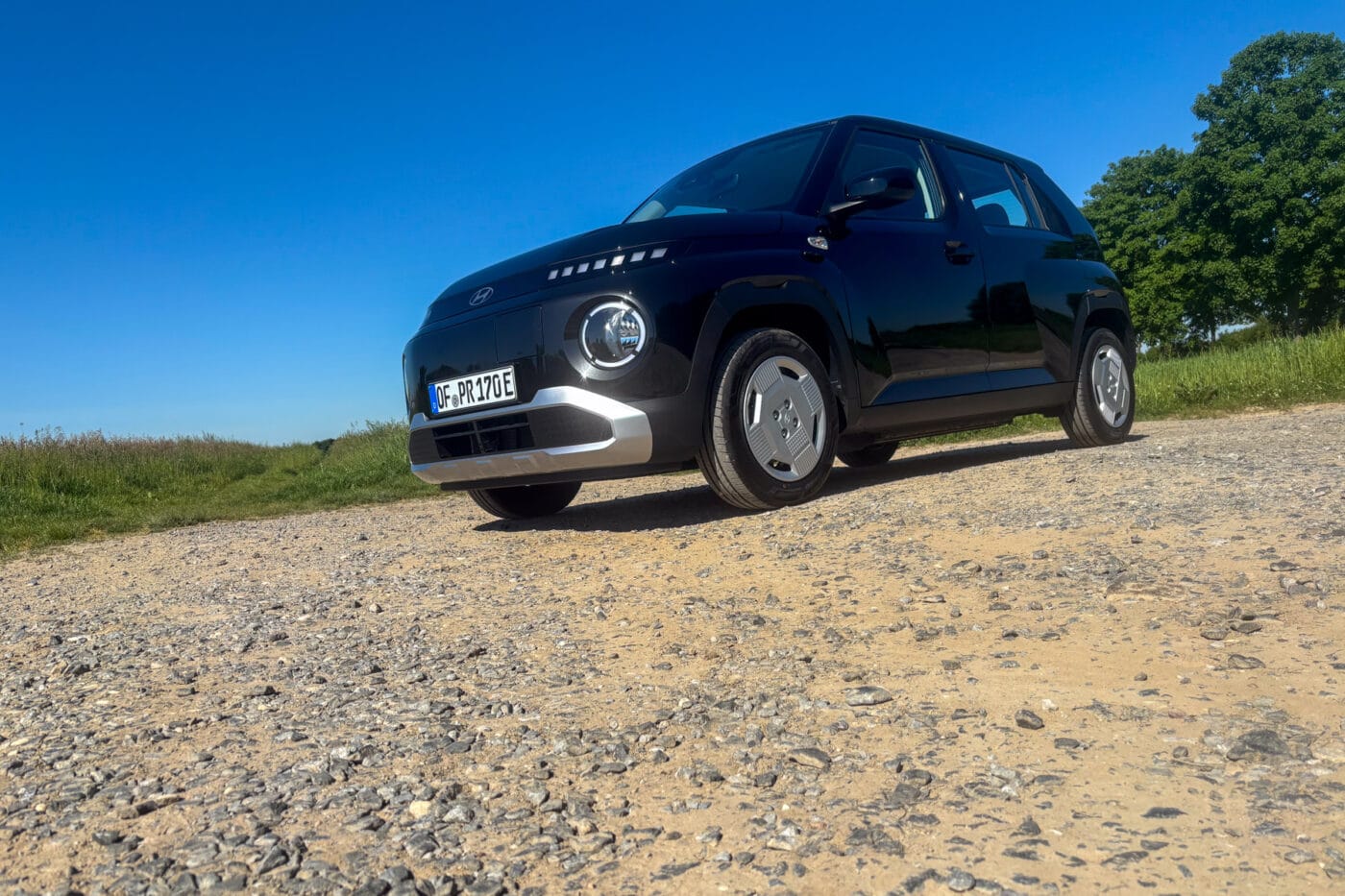
Small electric car faces its test: What can the Hyundai Inster do for 25,000 euros?
When we were first able to test the new Inster on a ride around Frankfurt in February, we travelled with one of the ‘Prime’ models. This top-end trim is only available with a larger battery which raises the price to an impressive €30,100 euros. However, with features such as Hyundai’s V2L adapter, a particularly modular interior, plus all kinds of assistance systems, the Inster leaves little to be desired – the equipment is more reminiscent of a larger Ioniq 5 than an affordable small electric car. However, when it comes to the price, the three is at the front, which means that the 3.83 metre long Inster is already on a par with the cheapest electric compact cars.
It’s understandable that manufacturers want to use their test cars and demonstration models to show off what the new model can do as well as any new features the developers have come up with (including those which have not been cancelled by the purchasing department due to costs). But often the expensive top versions have little in common with the features that most customers actually buy – whether in the fleet or private customer segment. One example: at the presentation of the Dolphin Surf a few weeks ago, BYD made the top-of-the-range Boost version available to journalists, with a 42 kWh battery and a 115 kW motor. However, the regular list price here is just under €31,000 euros. With a base price of €22,990 euros or even just €19,990 euros in the discount campaign available right at the start, the basic Active version is more likely to be the variant that customers will buy. However, the Active only offers 65 kW of power and a range of just 220 kilometres due to the 30 kWh battery.
Transferring this back to the Inster, the question arises as to how the basic equipment on the €23,900 ‘Select’ compares to the ‘Prime’ top model? Hyundai has now provided us with such a test car – with the small 42 kWh battery for the same basic price, equipped with just two extras: the efficiency package for €1,000 euros (more on this later) and the ‘Abyss Black’ mineral-effect paint finish for 570 euros. If we exclude the paintwork, we have a small electric car for €24,900 euros – exactly at the magical €25,000 euro mark that car manufacturers so often target for their ‘affordable’ models.
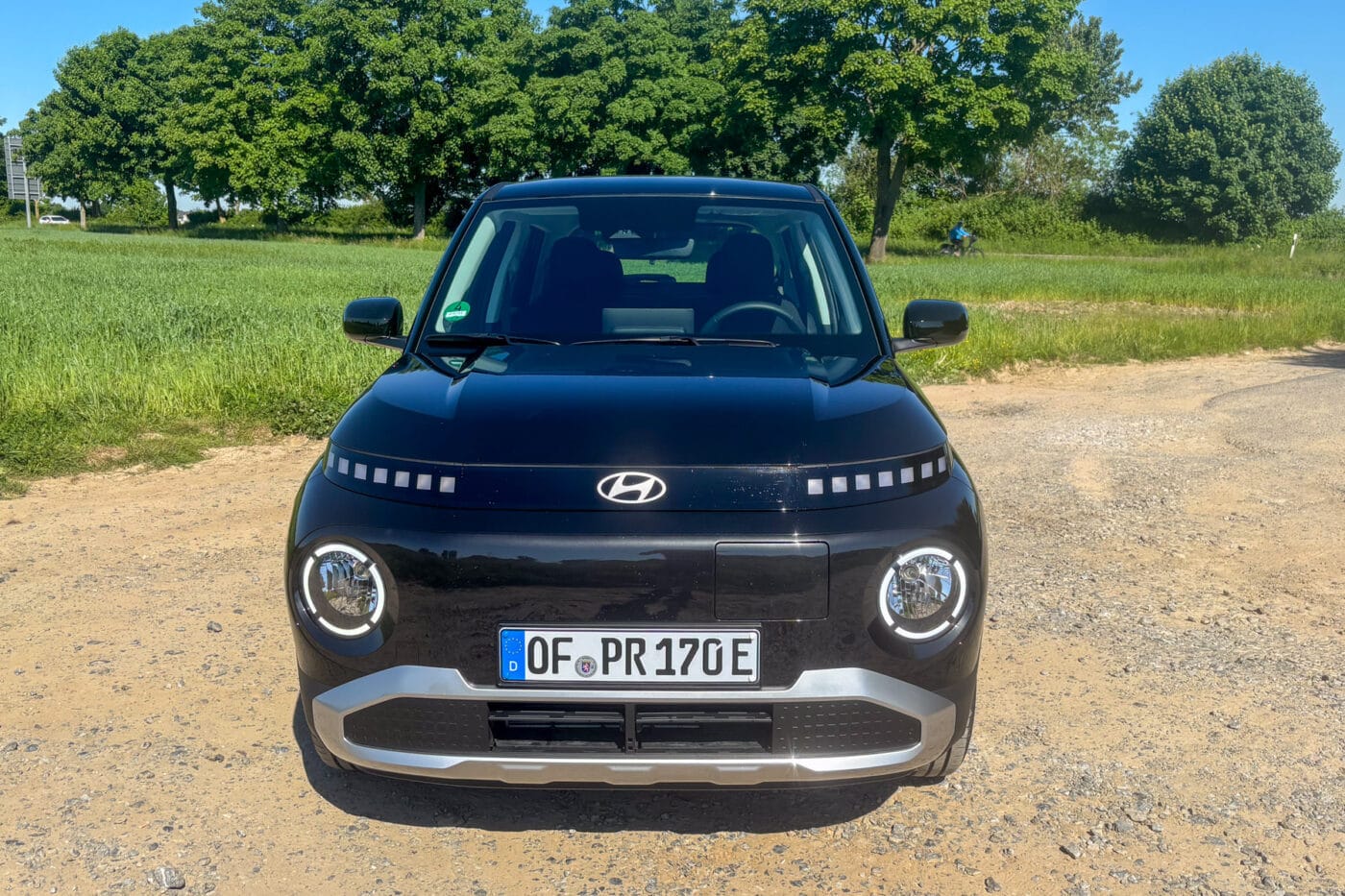
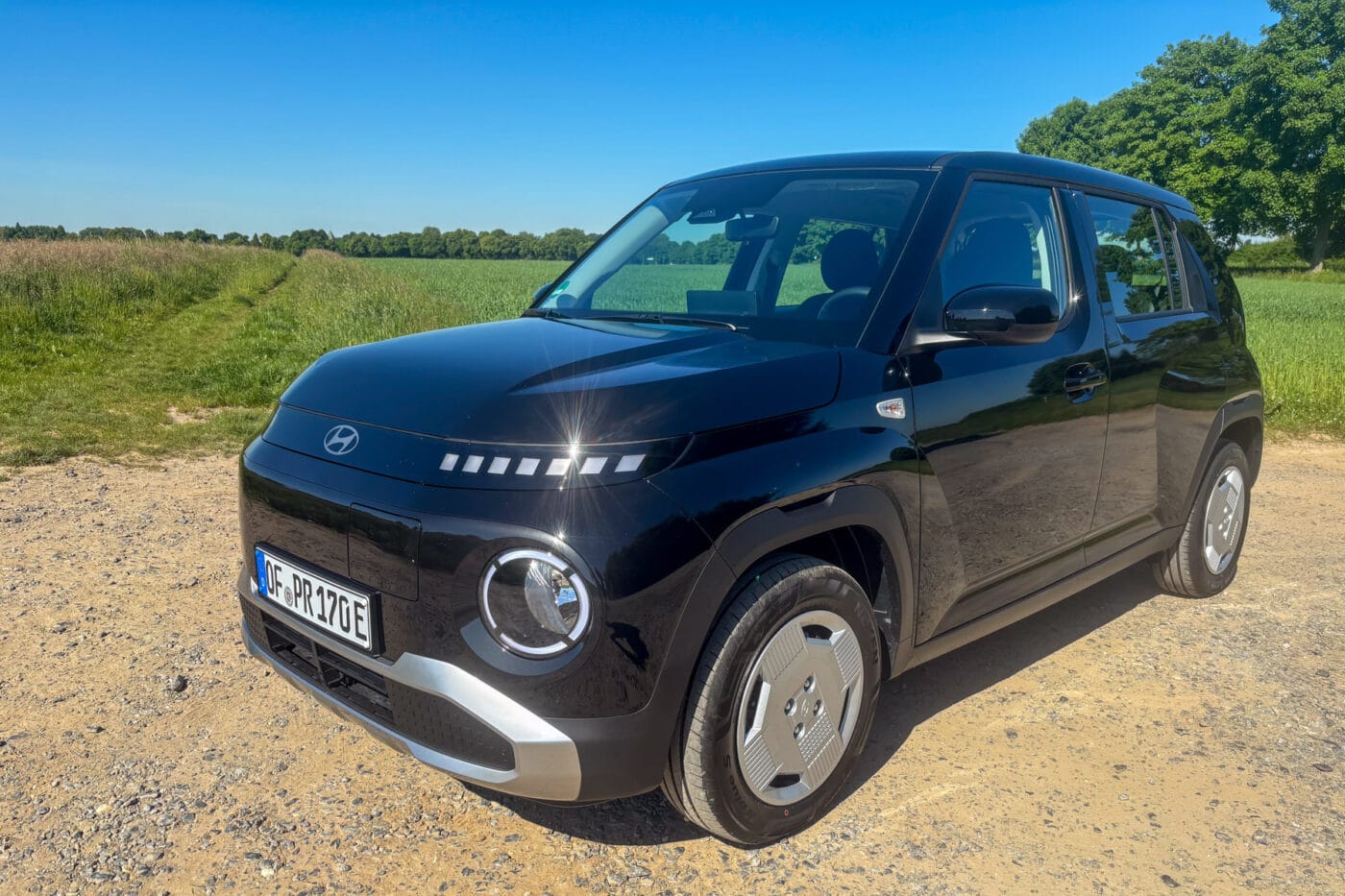
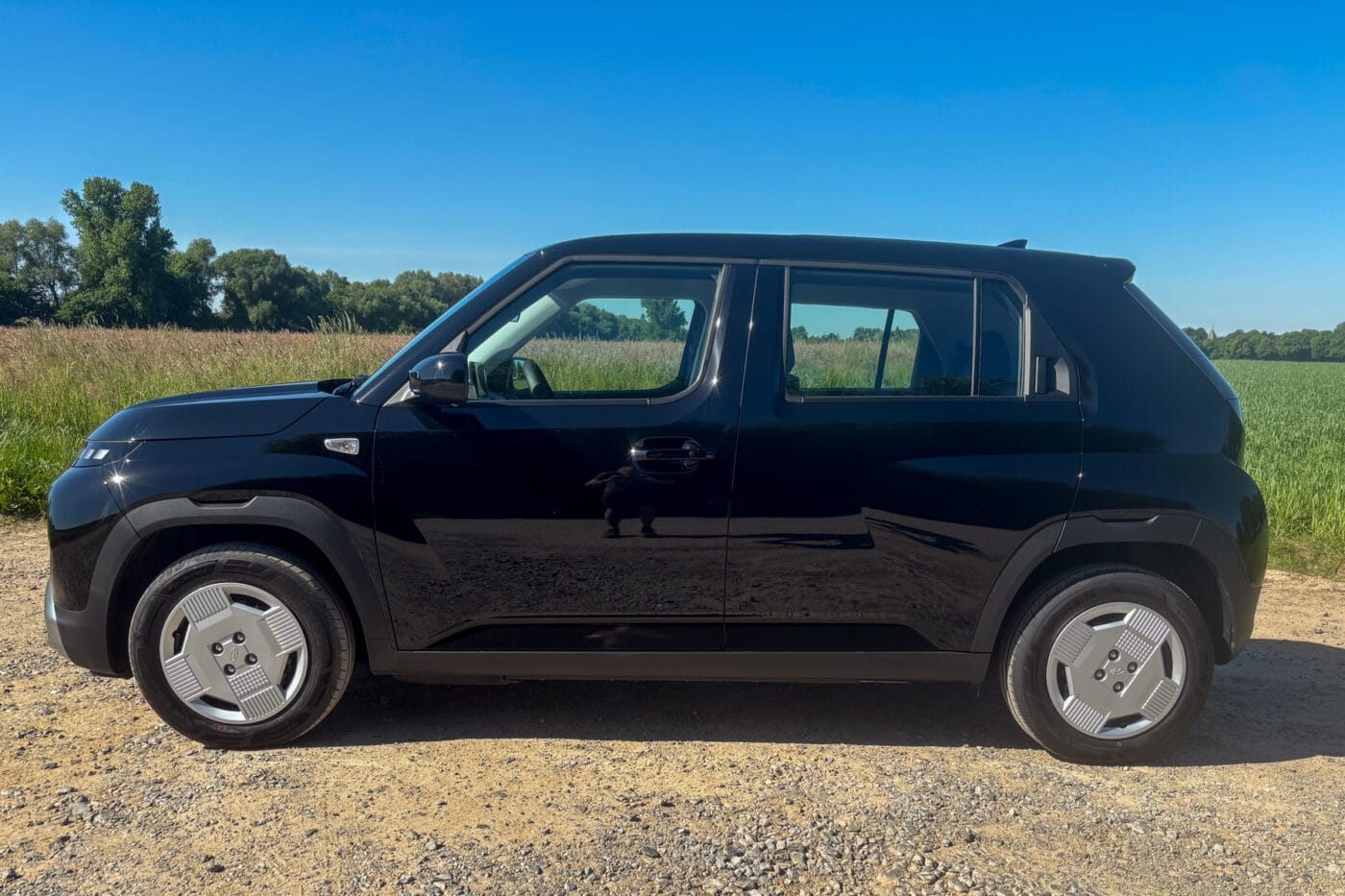
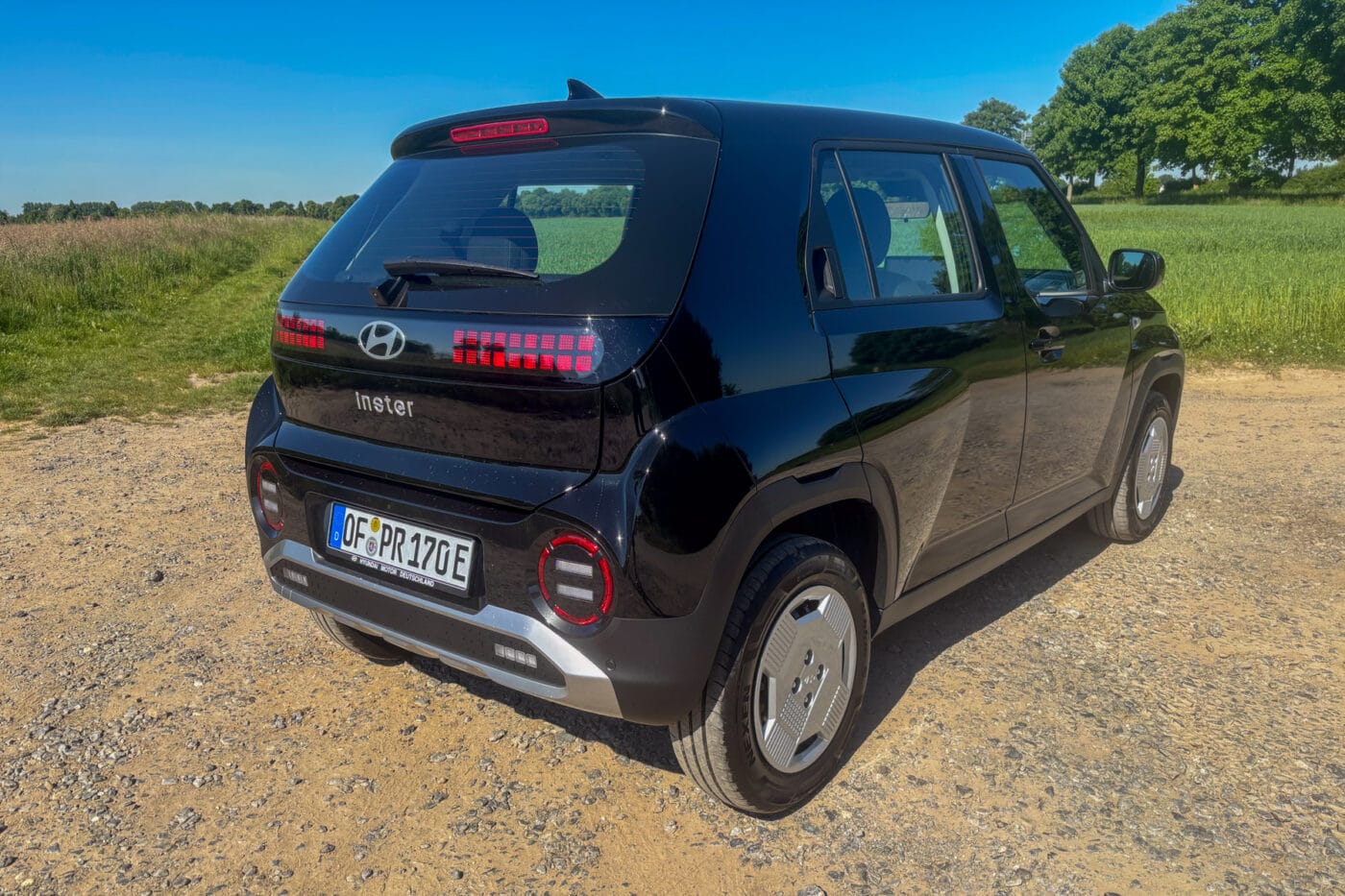
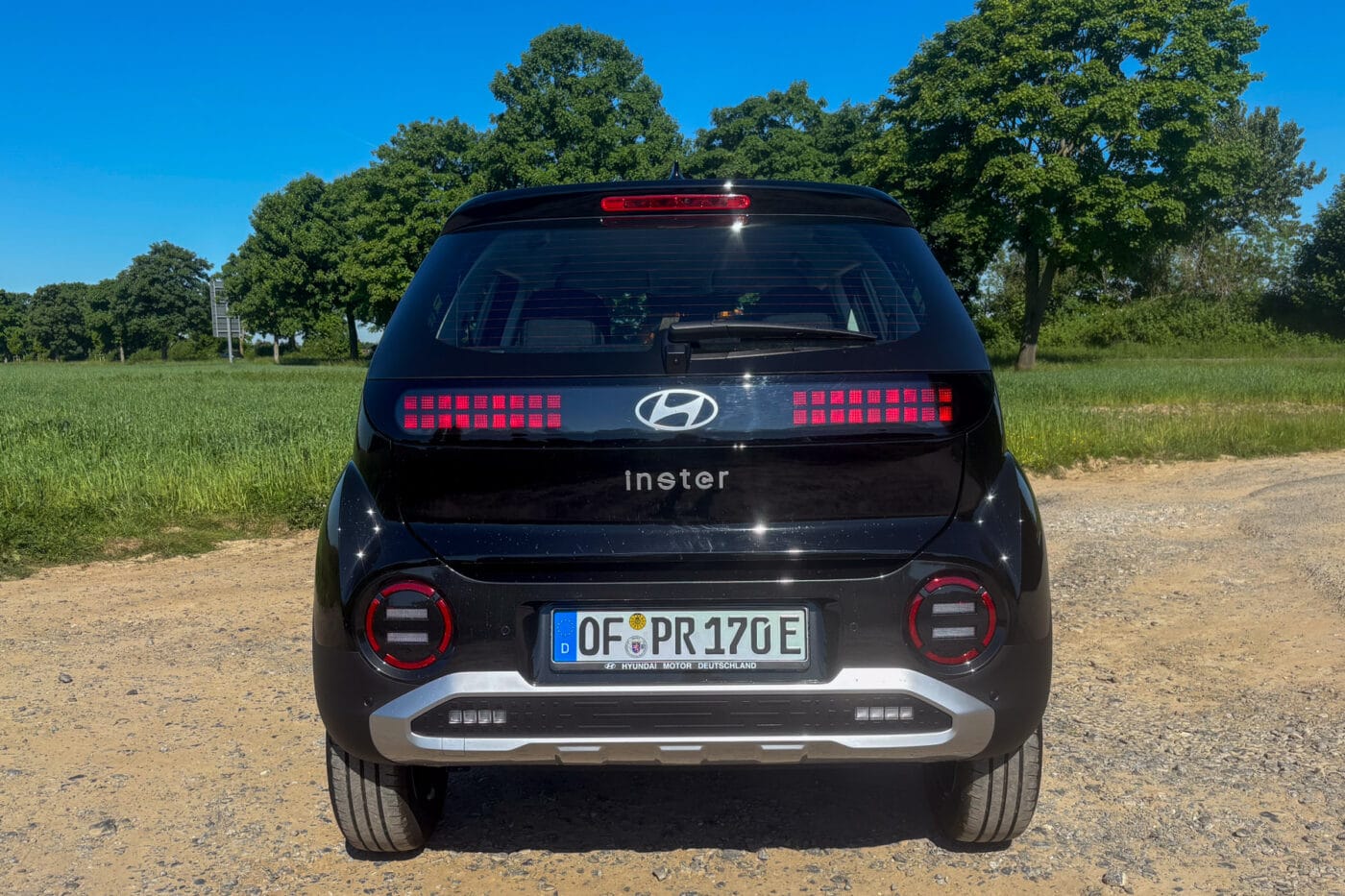
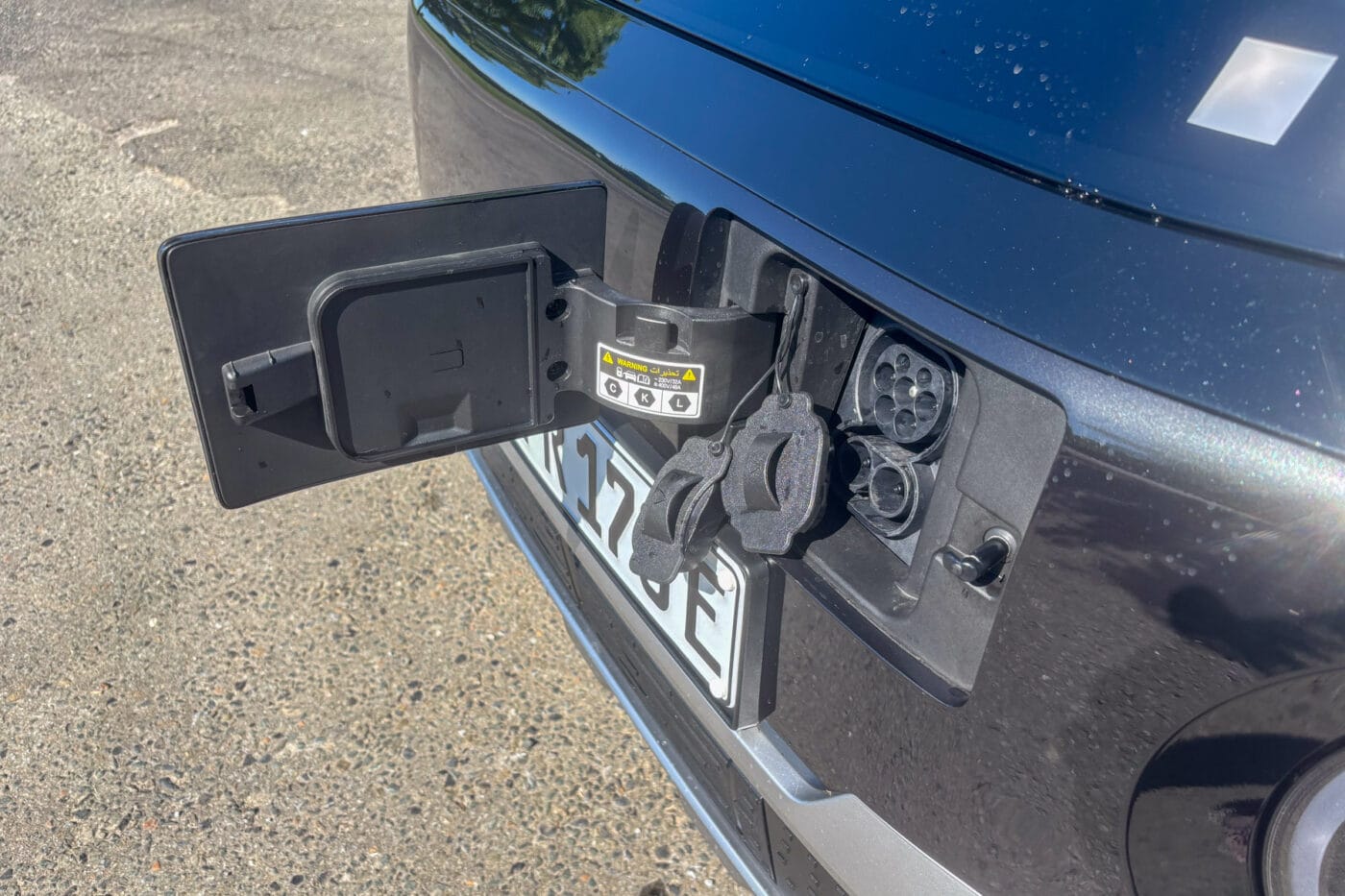

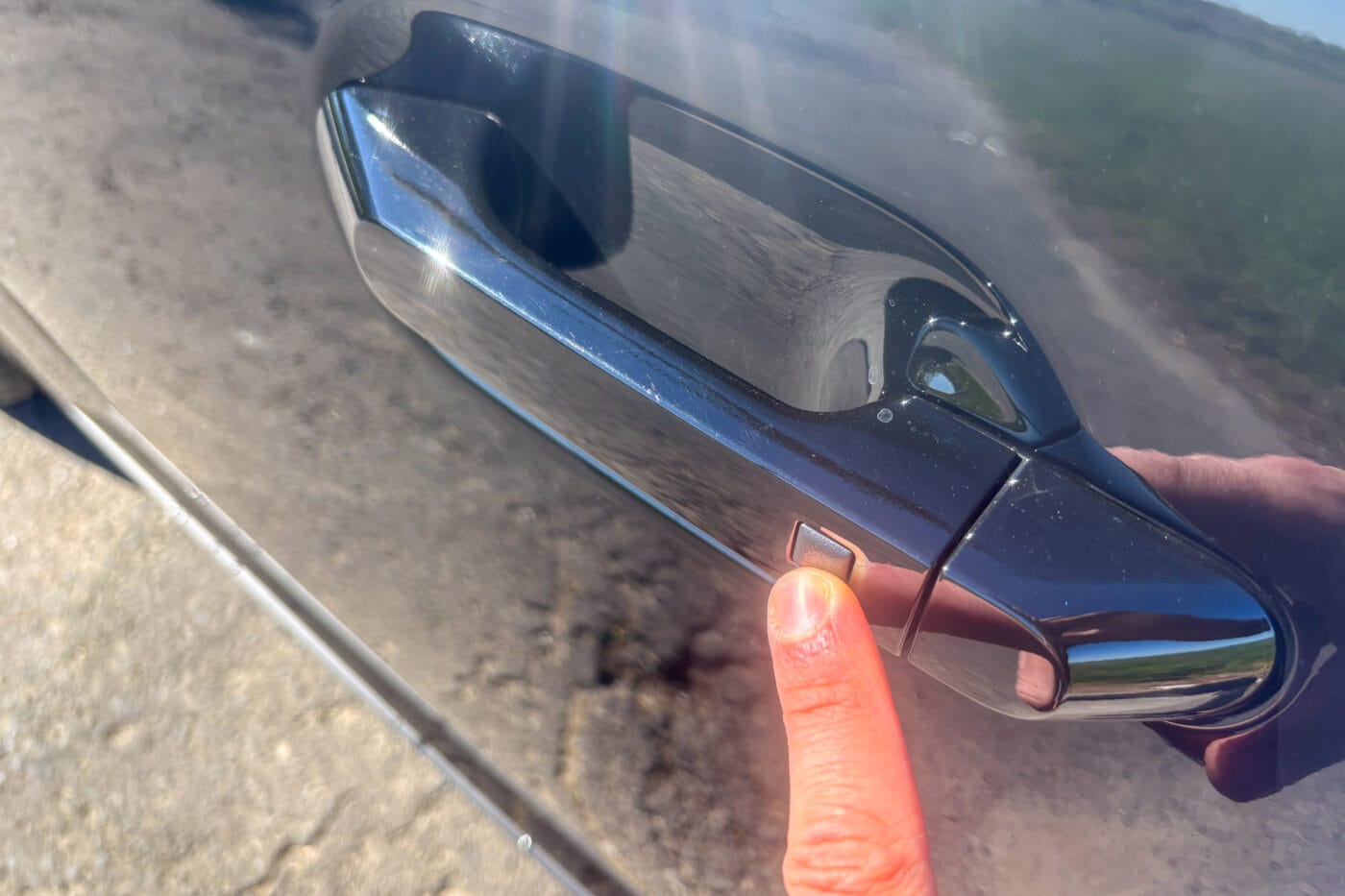
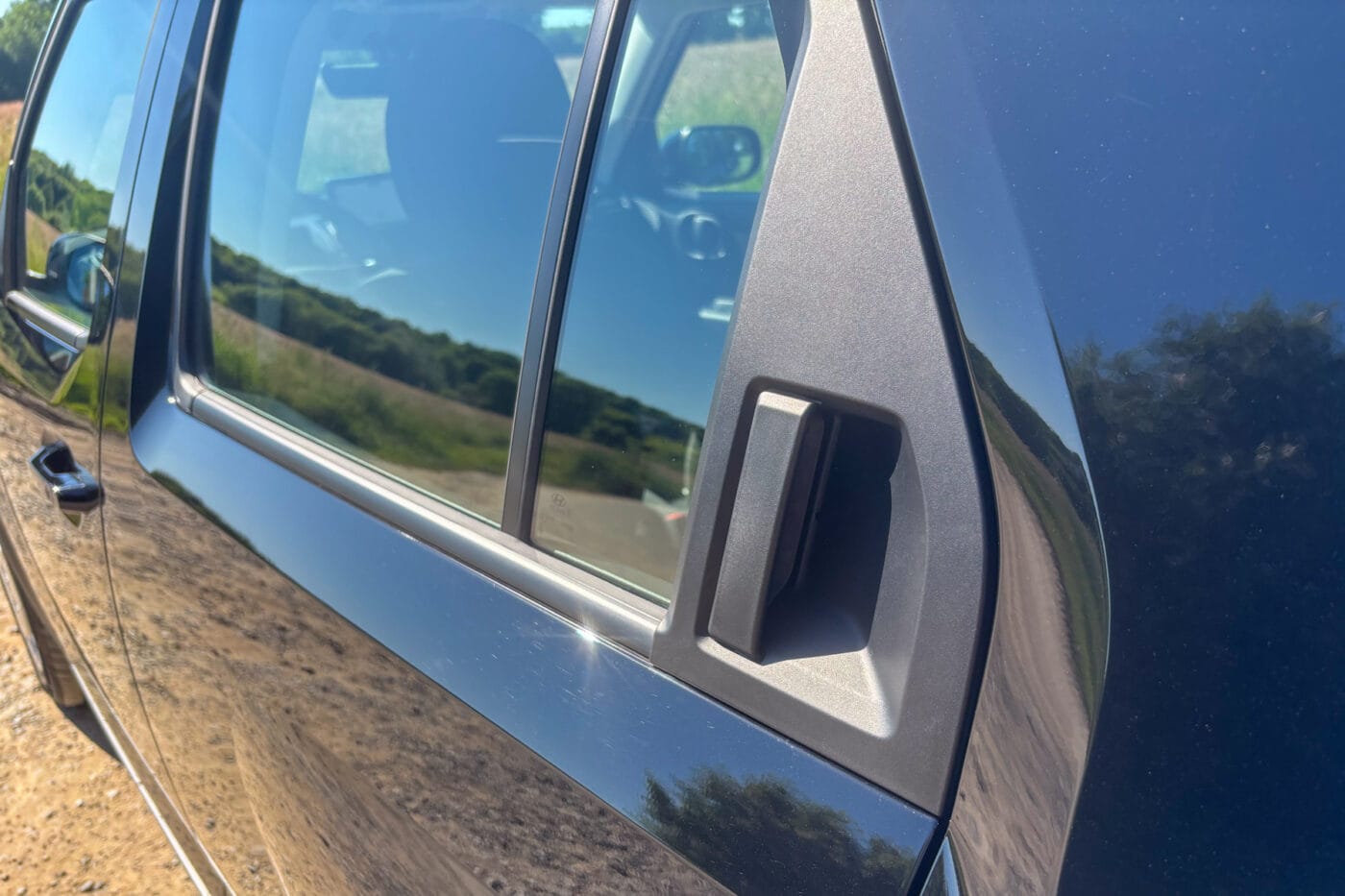
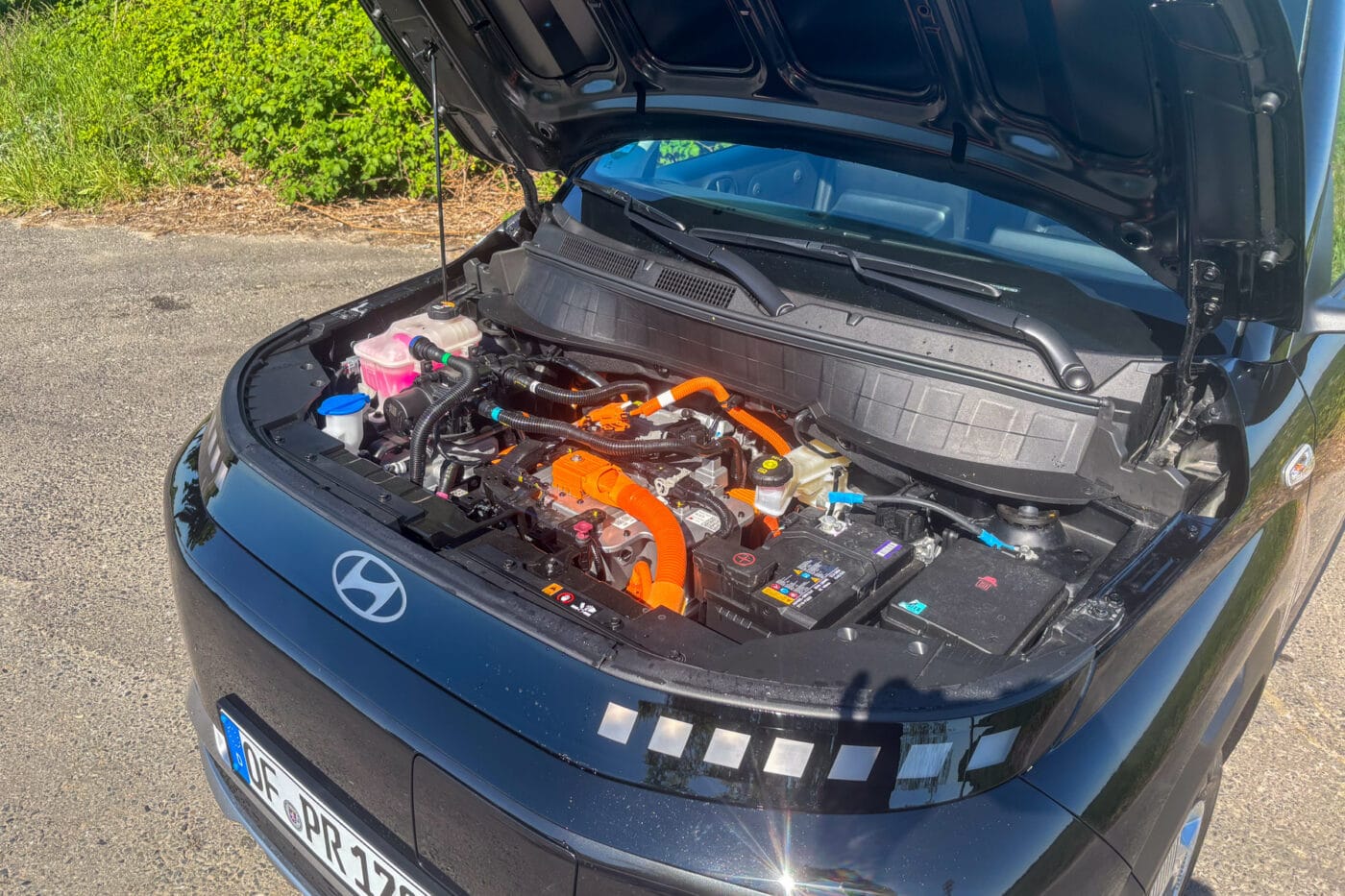
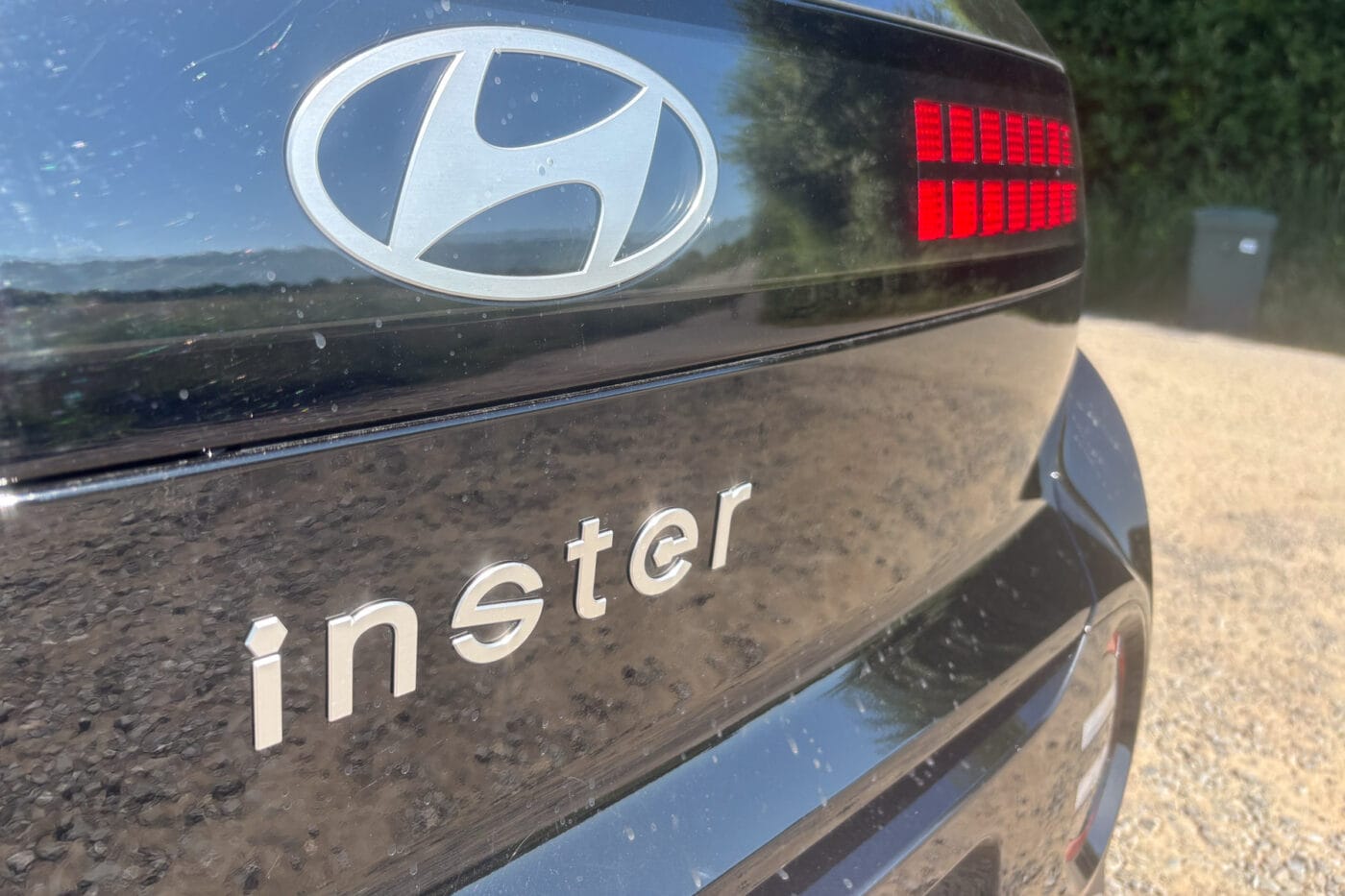
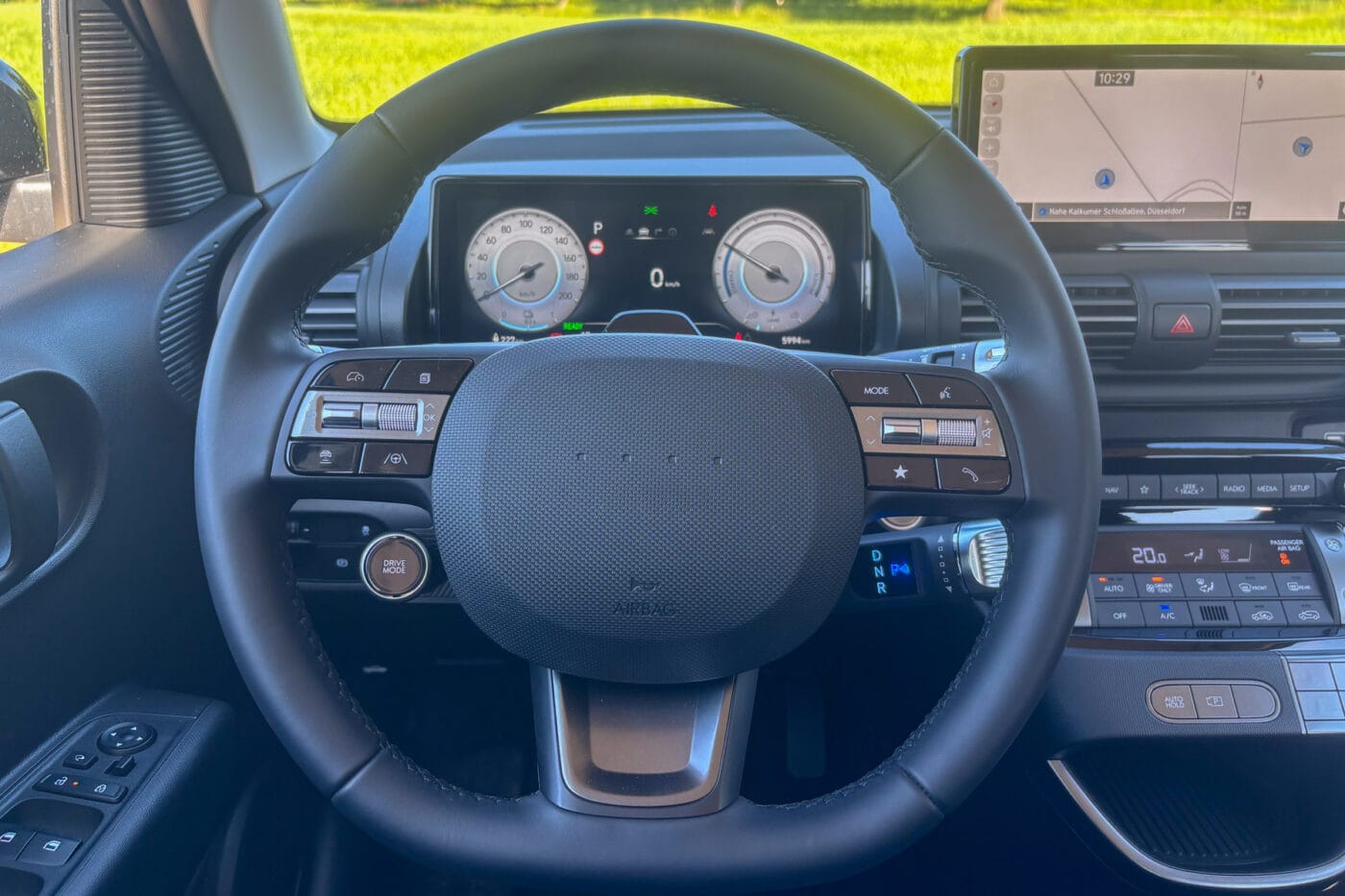
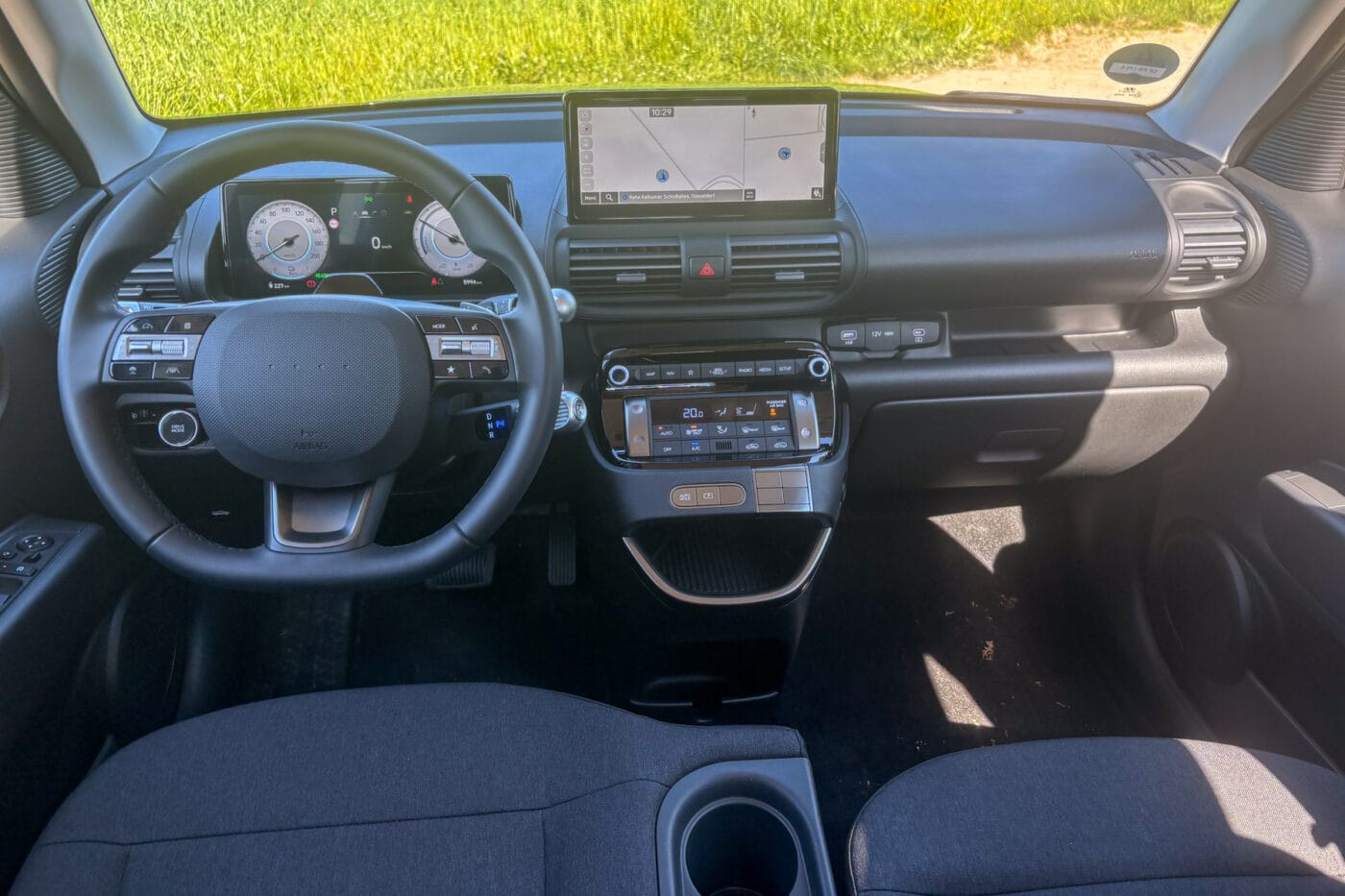
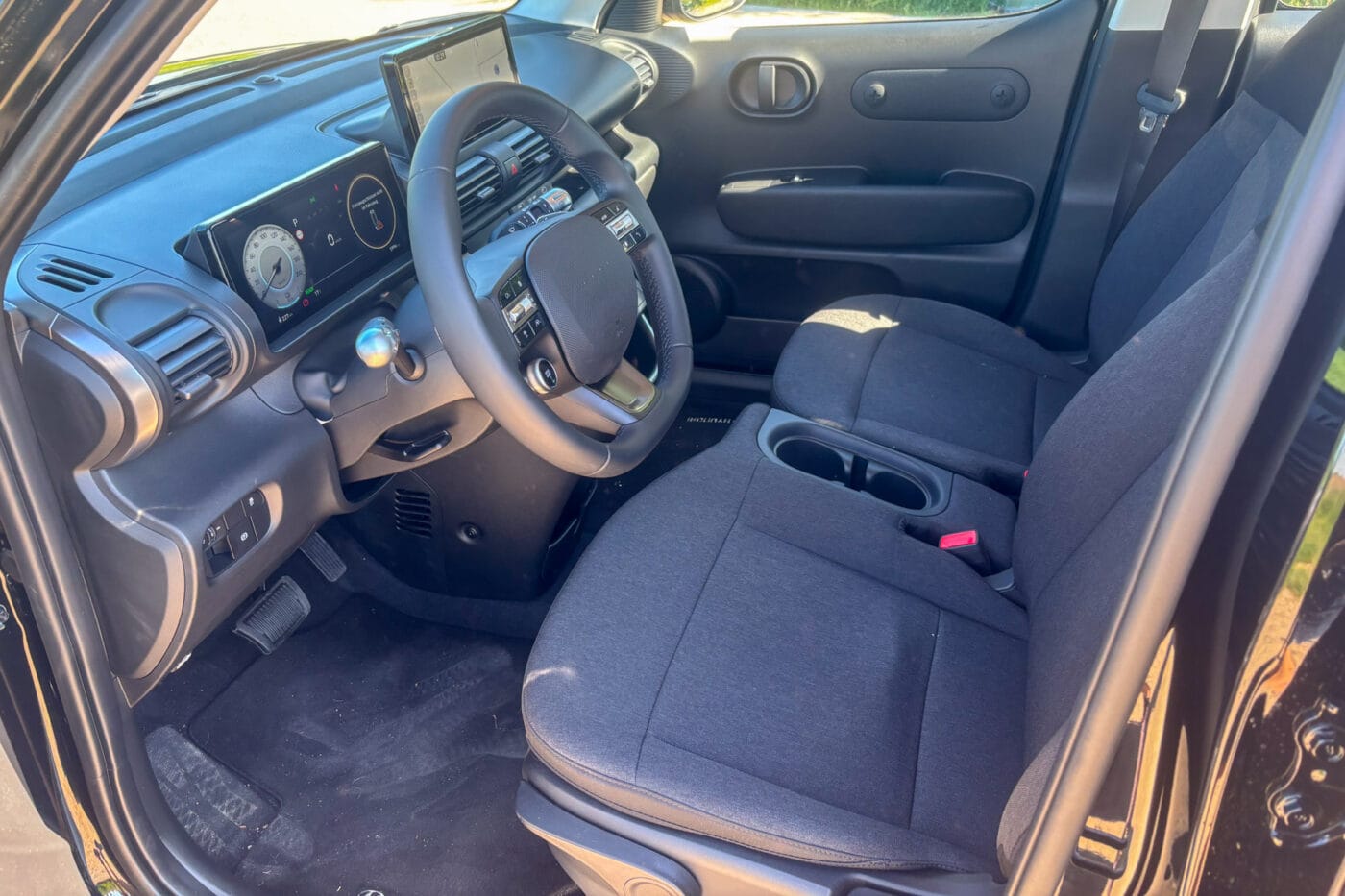
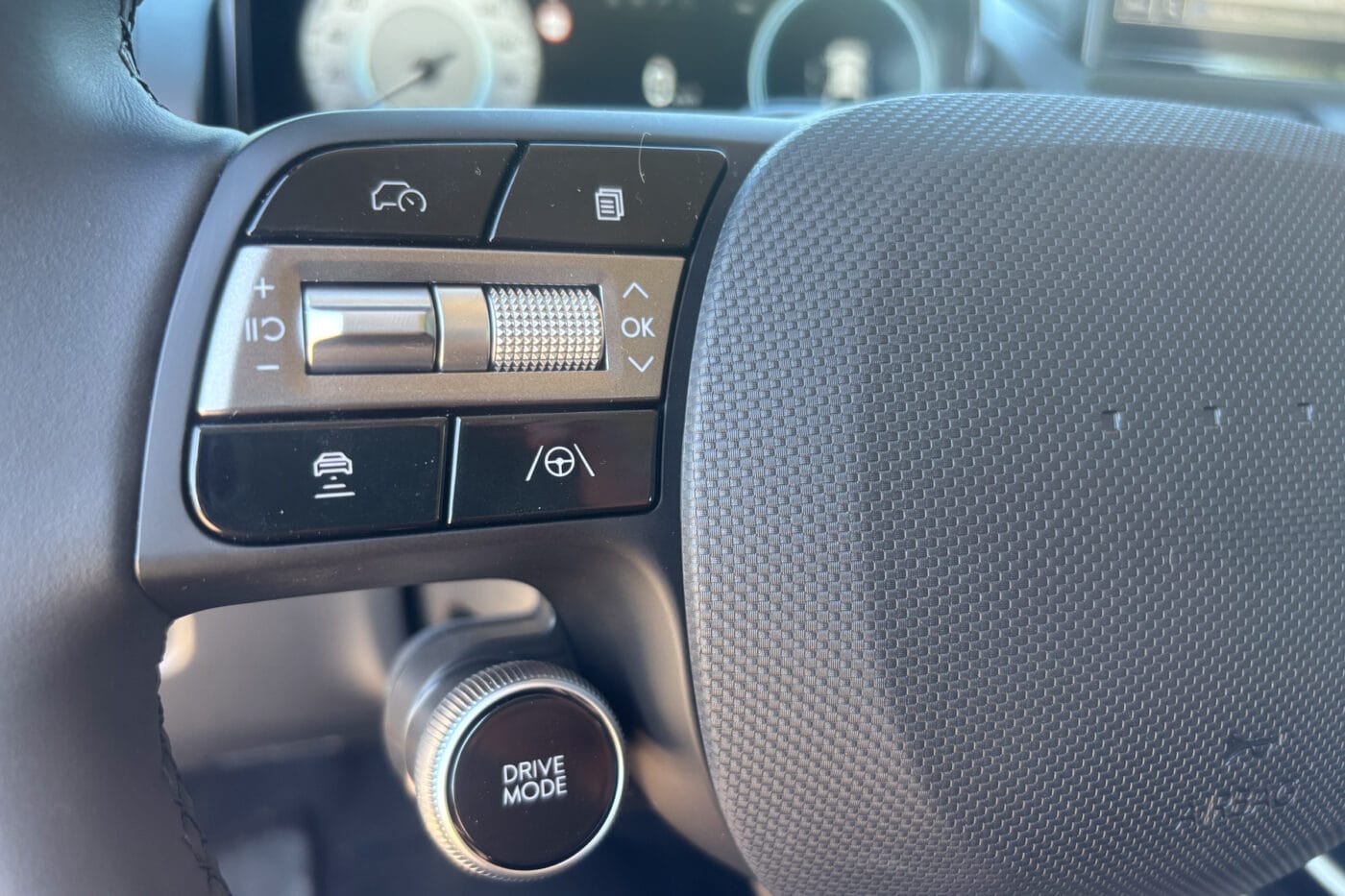
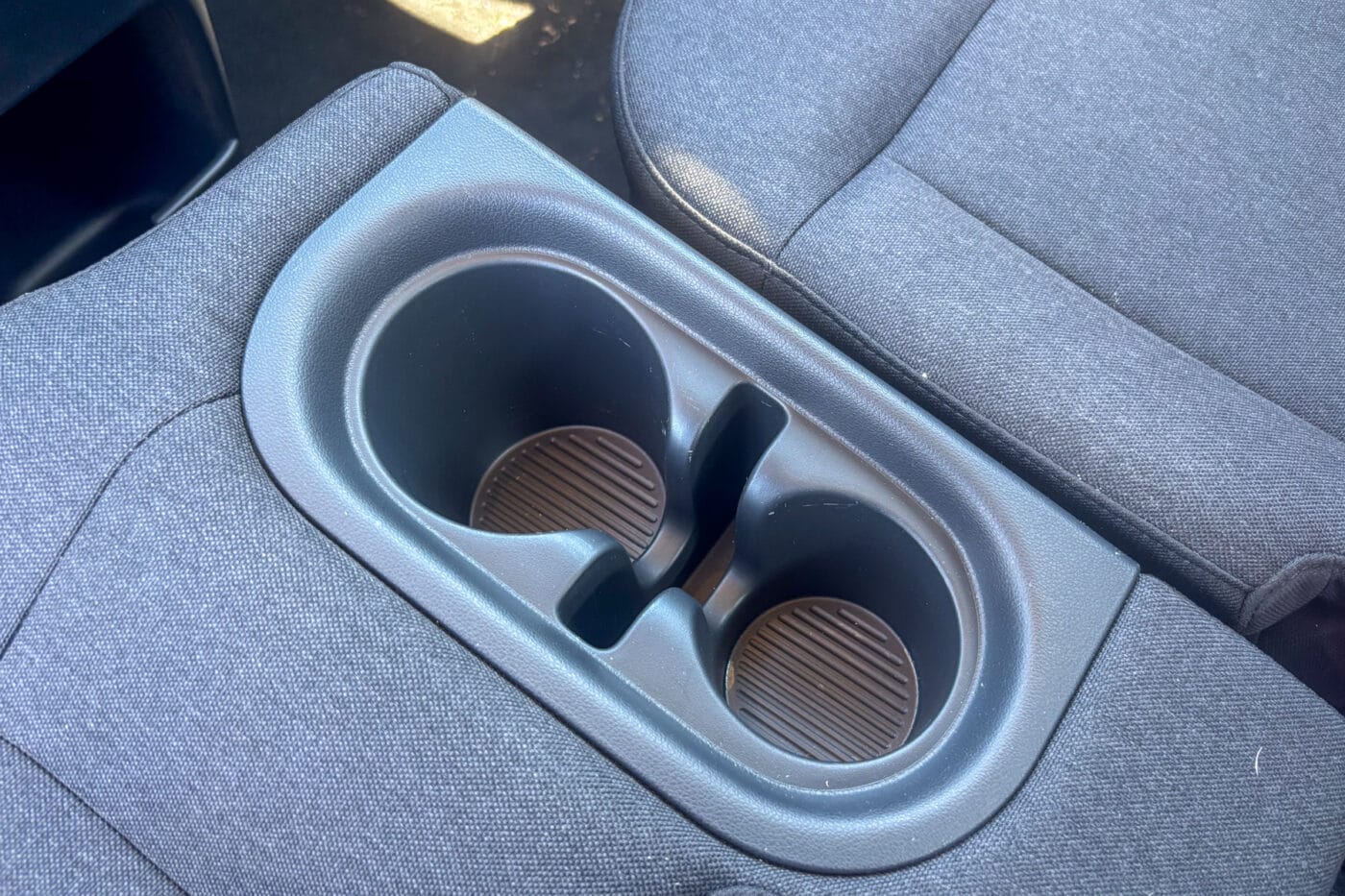
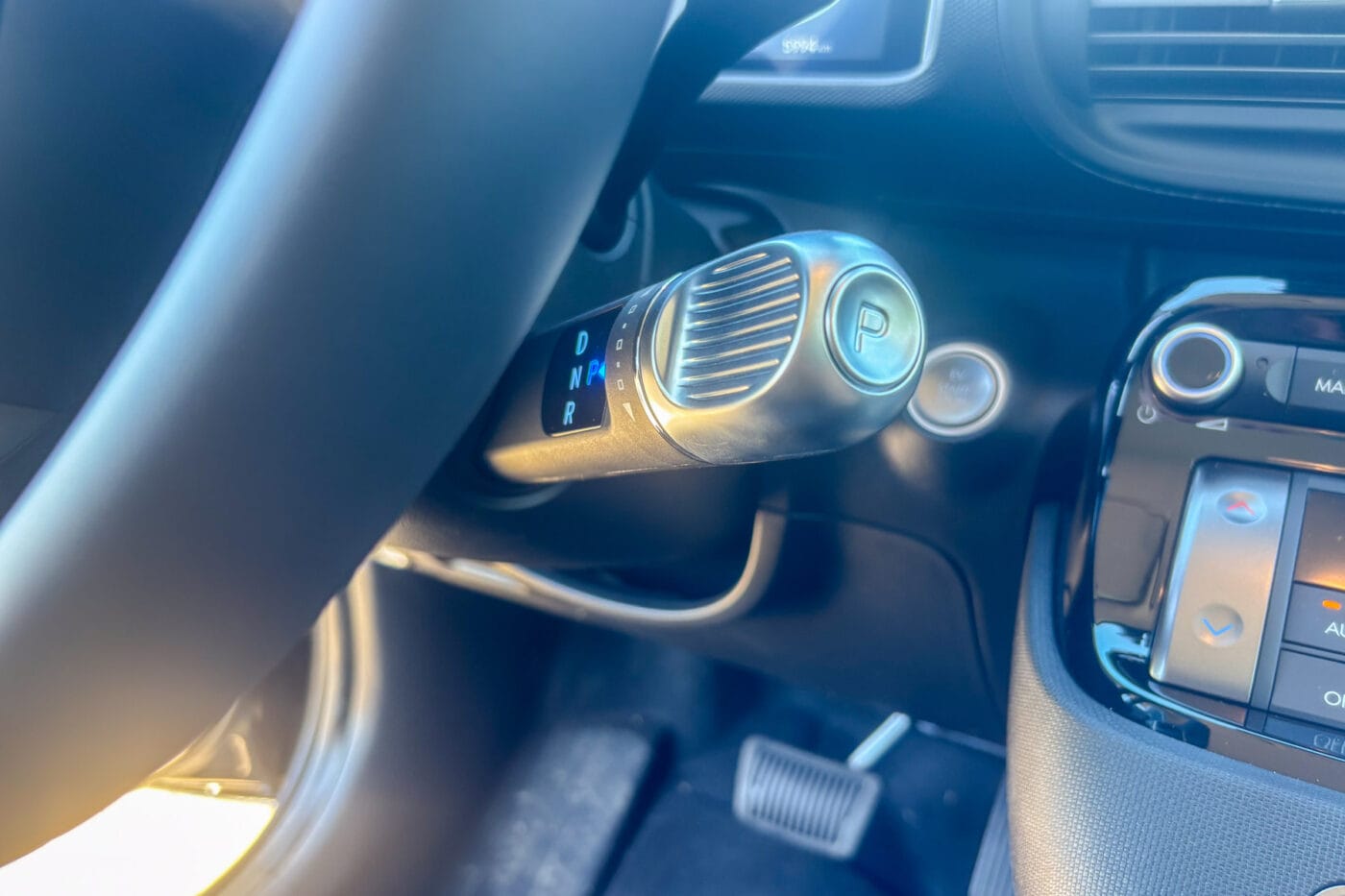
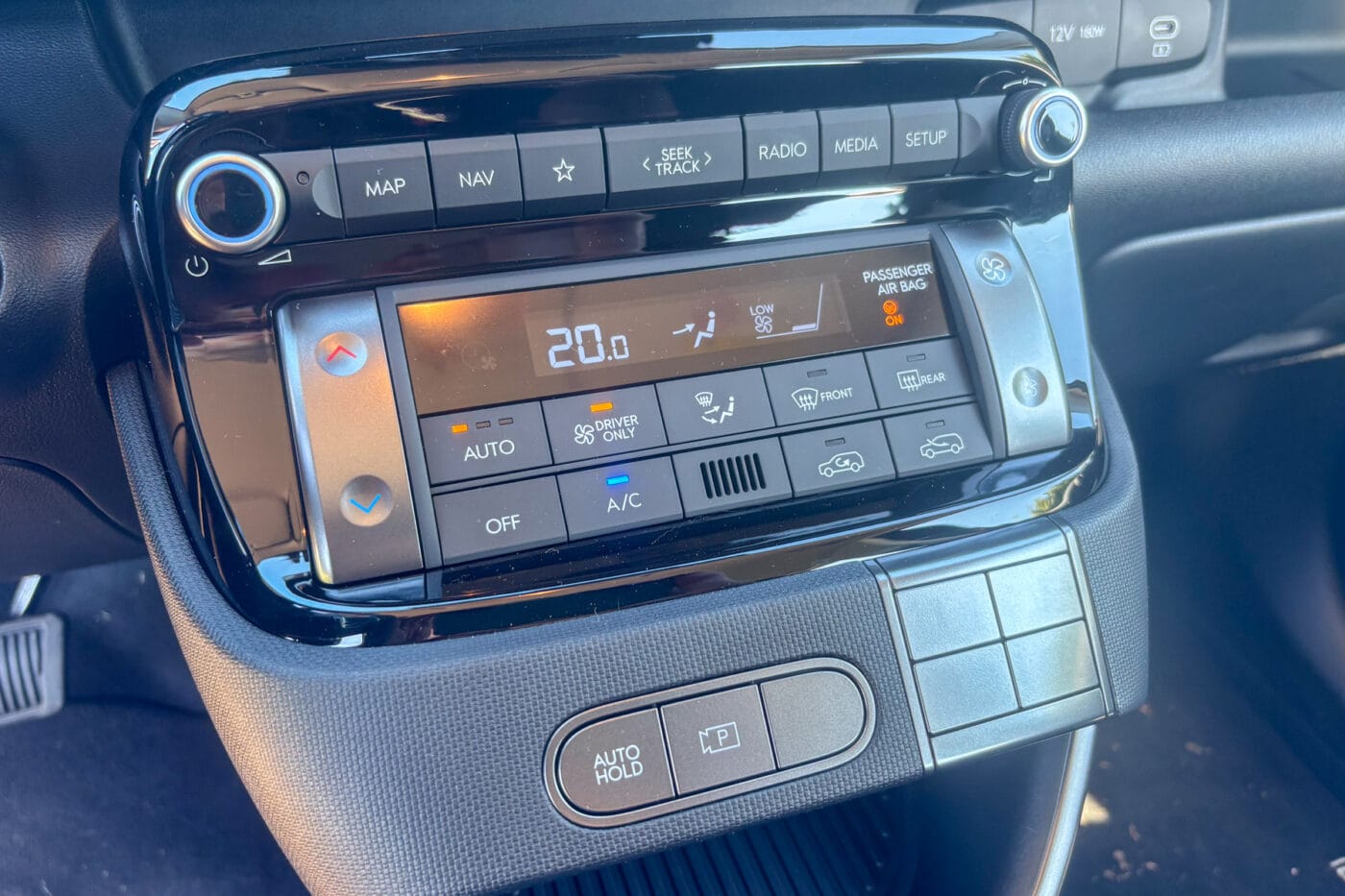
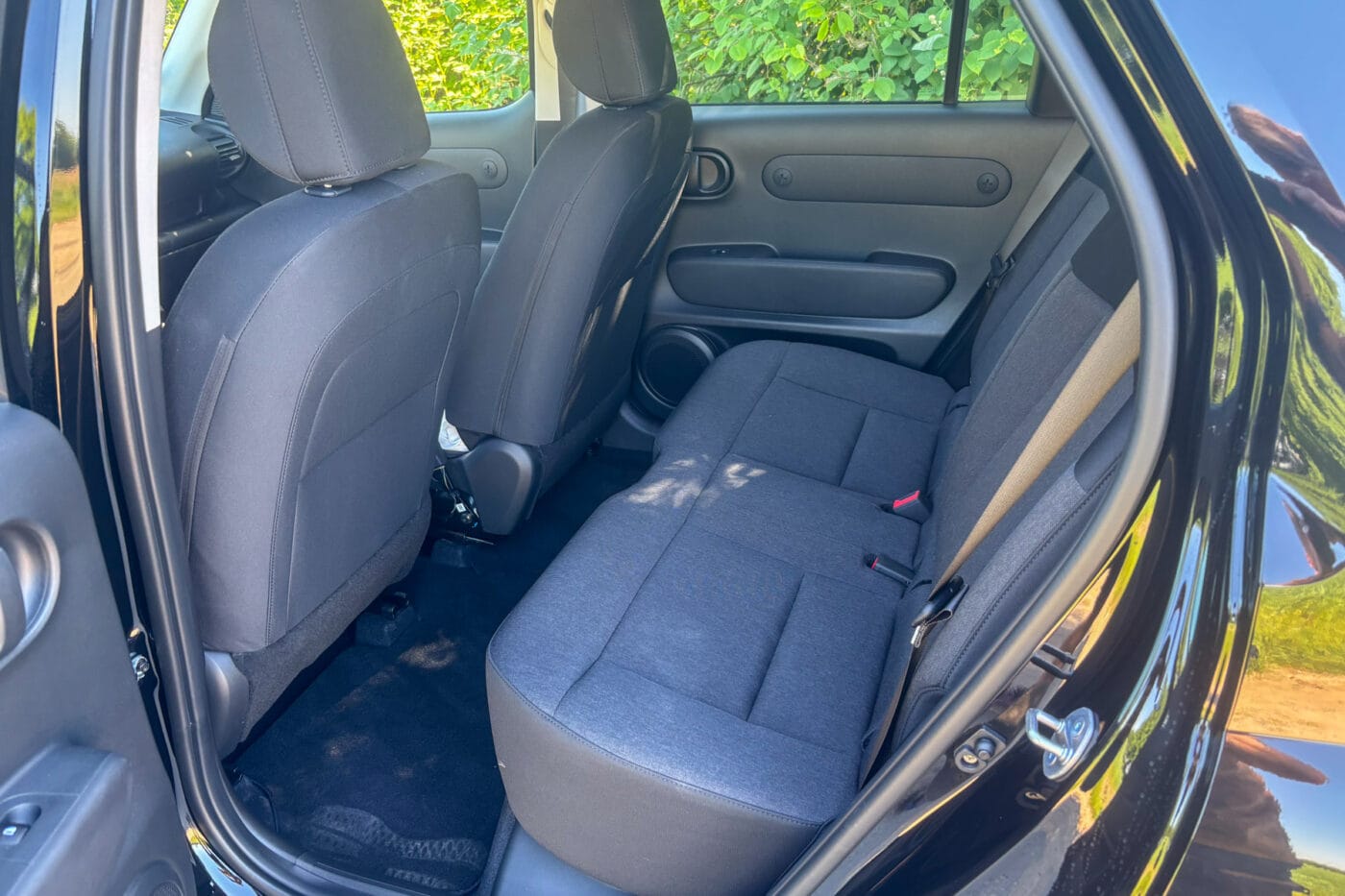
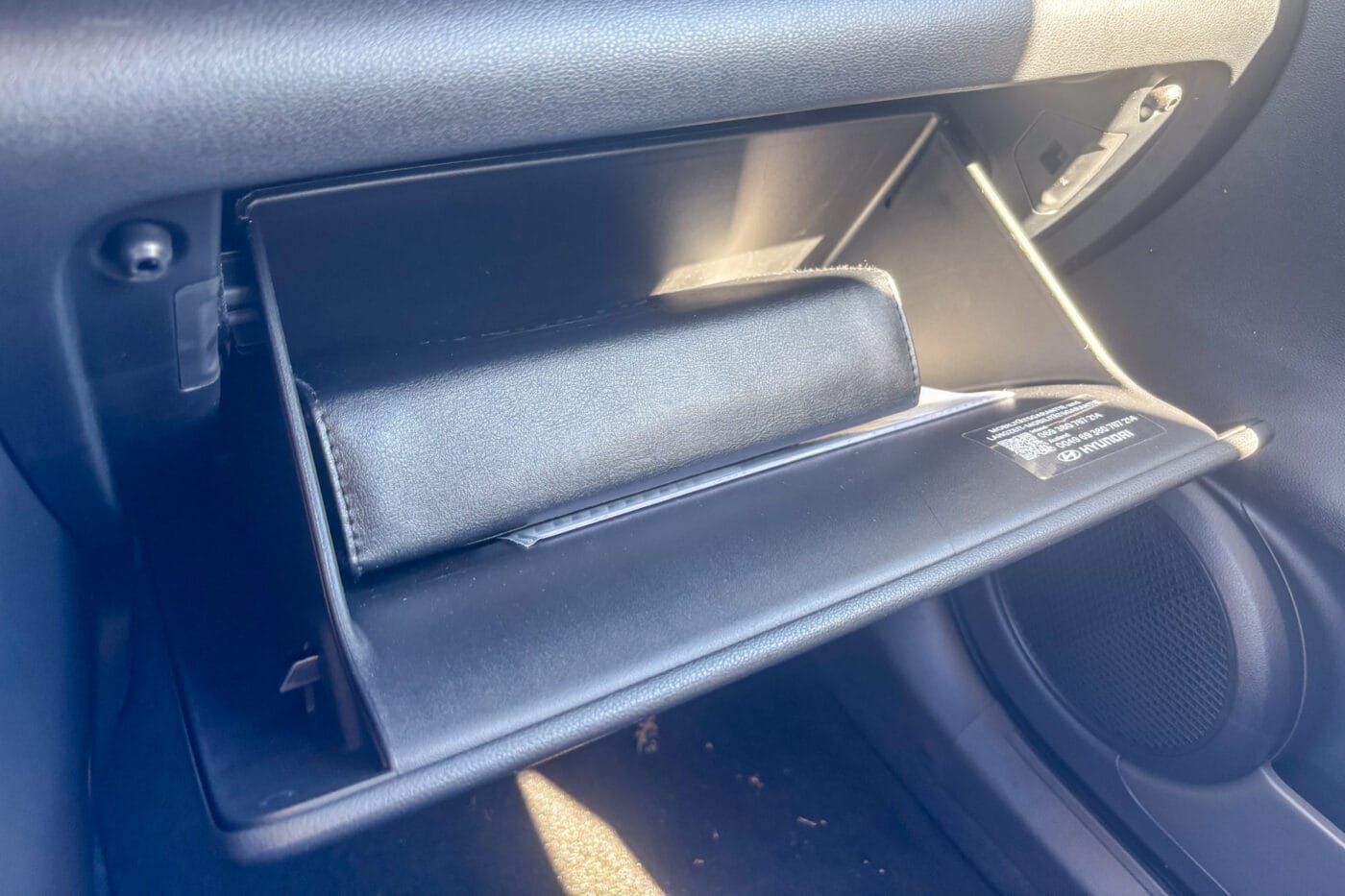
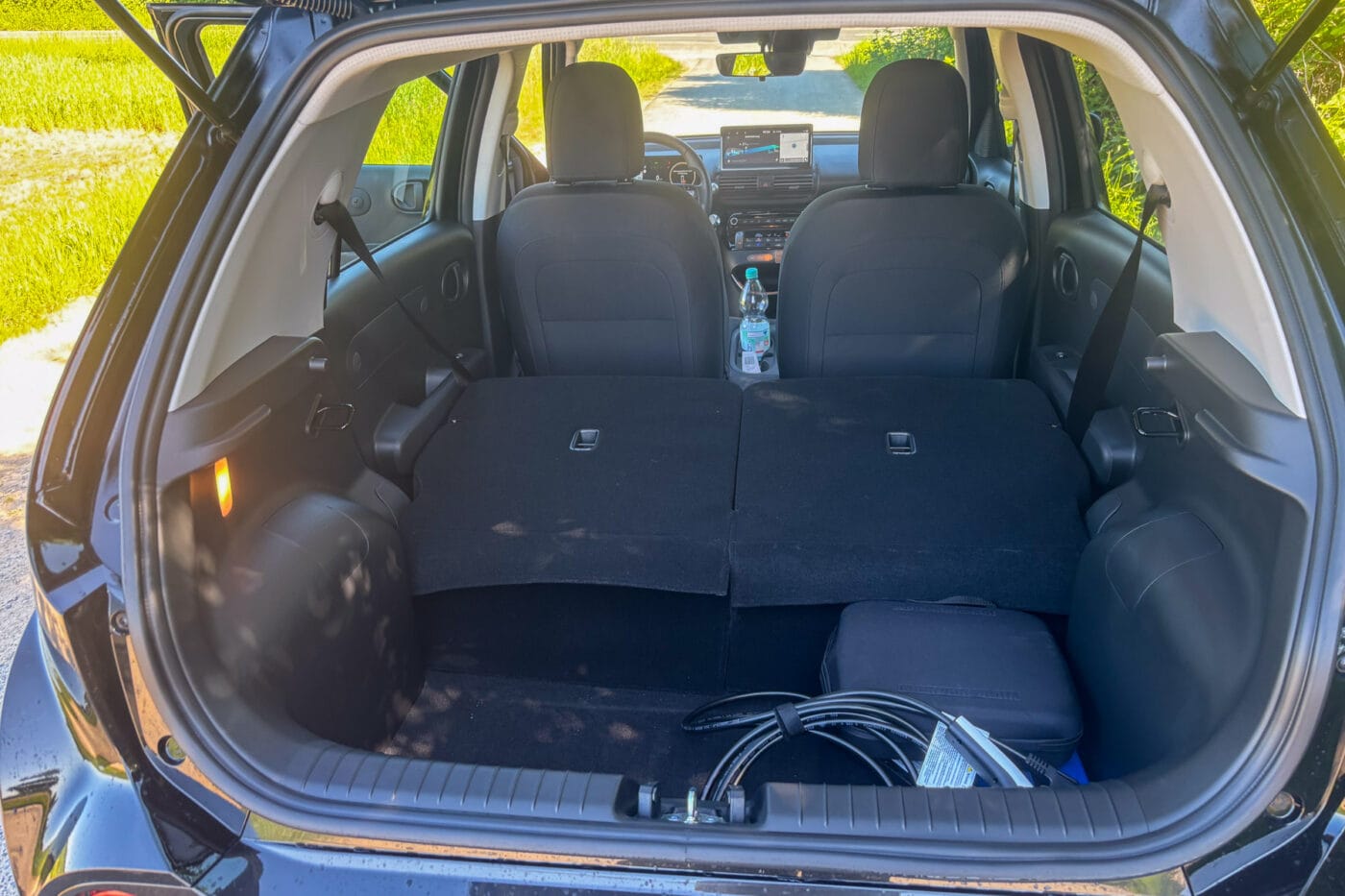
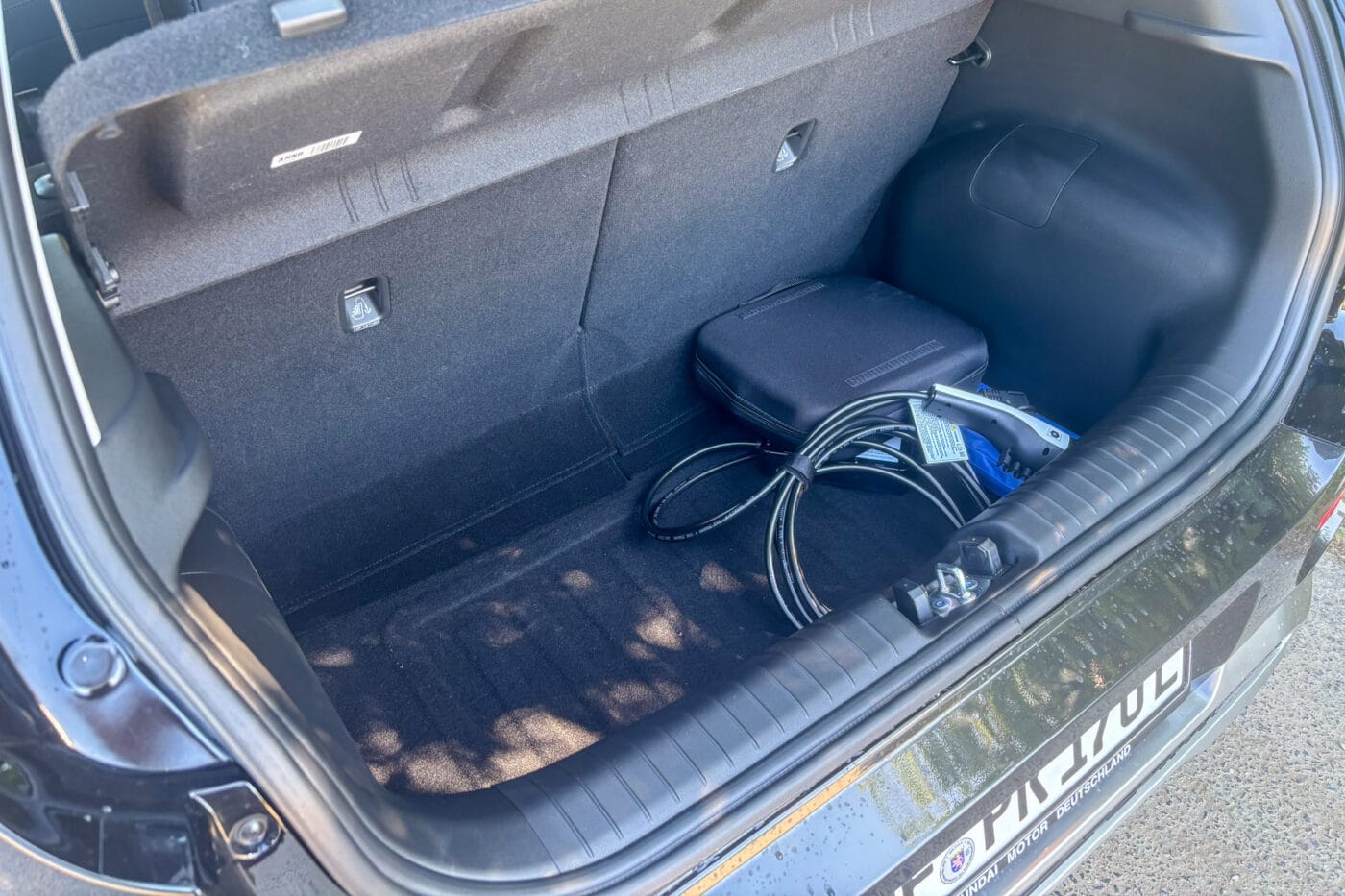
What does the Inster offer for this price? The 42 kWh battery uses NMC cells (the competition in this segment often relies on the cheaper LFP cells) and enables a WLTP range of up to 327 kilometres. The electric motor on the front axle delivers 71 kW in the ‘small’ Inster and 85 kW with the 49 kWh battery. The 3.83 metre long and 1.61 metre wide body includes four seats, 351 litres of boot space and a 10.3-inch touchscreen for the navigation system, reversing camera and infotainment as standard. Assistants such as adaptive cruise control are also fitted ex works.
But what does the small battery mean for the range? As a reminder: the test car in February with the large battery showed 266 kilometres on the on-board computer when fully charged – at just two degrees above freezing. Now in May, at around 20 degrees, the black test car with the small battery showed a range of 268 kilometres with a 100 percent charge – the large battery is estimated to have a range of around 320 kilometres in comparable conditions. Real range, mind you, not a WLTP value. That’s impressive in this segment.
Amazingly low test consumption
The fact that the range of the basic Inster is so good is partly due to our very low test consumption. On average, it was only 11.9 kWh/100 km according to the on-board computer – admittedly in almost ideal outdoor conditions. After a few short journeys in the city and across country, consumption was even in single figures. In flat Düsseldorf and at temperatures where the air conditioning hardly has to work, up to 400 kilometres could be possible if your own driving profile allows it. Incidentally, the 42 kWh communicated by Hyundai is the gross energy content; in reality, 38 to 39 kWh net should be usable.
Even on the motorway, consumption remains within reasonable limits if you don’t drive too fast. At a cruising speed of 100 km/h, around twelve kilowatt hours per 100 kilometres flowed out of the battery; at a cruising speed of 130 km/h, consumption rises to the 16-18 kWh/100 km range. It almost seems as if the aerodynamics of the Inster take their toll above a certain speed: At 1.58 metres, the small car is higher than many an SUV model. What makes for airy and pleasant space in the interior (at 1.85 metres, I still had around 15 centimetres of air above the top of my head) naturally increases aerodynamic drag at 130 km/h. If the Inster were ten centimetres lower, motorway fuel consumption might also be better. But one thing is clear: for a small car, Hyundai has tried to get as much as possible out of a small footprint. That’s why the front end is quite steep and the roofline at the rear is quite abrupt, but at least it has a small roof spoiler and merges into the almost vertical rear window. Although this optimises the space inside, it is not good for air resistance.
However, the Inster is not a car for long journeys and it does a very good job in the city and on country roads. The 71 kW power output is sufficient for the 1,100-kilogram car, and the Inster accelerates briskly up to city speeds or even 70 kph. Above this speed, the propulsion decreases, and it takes 11.7 seconds to reach the 100 kph mark from a standing start. The small battery reaches its limit at 140 kph, while the slightly more powerful 49 kWh model can reach a maximum speed of 150 kph.
There is also a difference in fast charging: At 73 and 85 kW respectively, the maximum charging power of the two battery options corresponds quite precisely to the drive power. This may not sound like much, but the test car was able to maintain the level of 65 to 70 kW over a very wide range – from less than ten per cent to just under 70 per cent charge level, the available power is almost constant. For gourmets: the Inster then charges at a constant 240 amps and the charging power increases with the battery voltage for a long time. Then it briefly goes up to 225 amps before only 130 amps or around 39 kW flow into the battery from a charge level of 72 per cent, and at 80 per cent it is only 29 kW, with a downward trend. The Inster has the usual comparison window of ten to 80 per cent in the specified 30 minutes. This means that the Inster does not set any standards, which was not to be expected in this price range and especially for the basic model. For comparison, a BMW i3 with a 42-kWh battery took a little longer and was also just under 20,000 euros more expensive with some equipment. The fact that such a small car is now available for €25,000 euros (finally) is testament to the progress made in recent years.
With the standard sat nav, the Inster also helps you to find the right charging station. This is done either automatically during route guidance to a more distant destination (even if the Hyundai software takes quite a long time to plan the charging process) or manually. Some filters can also be used to display only the charging points of those operators to which you have (favourable) access via your own charging card. If you navigate to a stored charging point, the system prepares the battery for fast charging – but only if the car has the aforementioned efficiency package for an extra €1,000. In addition to the heat pump for more efficient air conditioning of the interior, this also includes battery preconditioning. Incidentally, in our test car, automatic preconditioning was only possible via the satellite navigation system and not manually via the battery menu as in other Hyundai and Kia models.
Whether this €1,000 is money well spent or not depends on the intended use. If the Inster is to be used regularly for longer journeys with quick charging stops, the efficiency package is recommended. Or even if you don’t have your own AC charging point in your garage at home or at work, and instead often charge at retail fast chargers while doing the usual shopping, for example. The preconditioning then ensures that the flat charging curve and the 30 minutes to 80 per cent can be reliably achieved, and that the charging power is not much lower than expected because the battery is too cold or too hot. This also provides more flexibility in the use of the Inster if it is the only car in the household.
| 42 kWh | 49 kWh | |
|---|---|---|
| Drive | FWD | FWD |
| Power | 71 kW | 85 kW |
| Torque | 147 Nm | 147 Nm |
| Acceleration | 11.7 s | 10.6 s |
| Top speed | 140 kph | 150 kph |
| WLTP range | 327 km | 370 km |
| Battery | 42 kWh | 49 kWh |
| Charge capacity DC | 73 kW | 85 kW |
| Charging time DC 10-80% | 30 min | 30 min |
| Price (in Germany) | 23,900 Euro | 25,400 Euro |
If, on the other hand, it is more of a classic second car for shorter journeys or the car is part of a company fleet with predictable delivery or care services, the efficiency package is not absolutely necessary, if the car can be charged overnight with alternating current. It is therefore a good thing that Hyundai offers the package as an option and can make the Inster cheaper in the base version, because not every customer needs the additional technology or wants to pay for it. And if you look at the Stellantis small cars with the more cold-sensitive LFP cells, the e-C3 and co don’t even offer battery heating for an extra charge.
The Inster also presents a good picture in terms of basic equipment. In addition to the 10.3-inch touchscreen, an equally large cockpit display is installed ex works as a digital instrument cluster, and operation with a mixture of touchscreen and large, haptic buttons is quickly learnt. What is missing in the ‘Select’ base model is the heated front seats – these are only available from the ‘Trend’ trim level upwards. Admittedly, the start-stop button took a little getting used to for me. An electric car doesn’t need an ignition or pre-heating – getting in, buckling up, pressing the brake, and engaging the gear is actually enough to signal your intention to drive off. What’s more: In the Inster, the start/stop button is positioned in such a way that from most viewing angles it is concealed by the massive gear selector lever as in the Ioniq 5 and Ioniq 6.
What the little Inster does much better in my eyes than the two 800-volt Hyundai models is the standard keyless go system: on the E-GMP models with their flush, fold-out door handles, you have to press on a small, square touch surface and pull your hand back so that the door handles can fold out. Without a real pressure point on the touch surface, this can take two or three attempts. The Inster, on the other hand, has classic bow handles and an old-fashioned button integrated into them. All you need to do is reach into the handle from above and briefly press the button with your thumb, and the door unlocks immediately. So it’s practically a handle with which you can open the car. The simpler technology is simply better.
Plenty of space inside despite the compact dimensions
In the interior, the large switches for the air conditioning are almost a little too simple, the look is more reminiscent of the 80s or 90s. However, there is also a clear advantage: they are extremely easy to operate and can be used without distraction while driving, unlike some pure touchscreen solutions. The materials in places that users regularly touch are robust and functional, but hardly a feast for the eyes. Of course, there is a lot of hard plastic, but at least it blends in well with the overall look. Even in significantly pricier vehicles, there are now larger areas of hard plastic. If the colours alternate a little and break up the design, I can just about live with it – if the rest is right. As we’re talking about the affordable basic version; in the ‘Prime’ model from the above-mentioned February test, everything looked a little more upmarket.
While I was travelling alone on the first trip, several people travelled with me during the longer test period. None of the passengers complained about the space, as there is plenty of legroom in the rear. And even in the front, where Hyundai has dispensed with a centre console between the front seats in the 1.61 metre wide Inster and instead offers a kind of continuous bench seat, the driver and front passenger do not come too close to each other at the shoulders. The concept works, although I admit that I would like to see an elbow rest in the centre for longer journeys. The cup holders, which are virtually integrated into the driver’s seat, are also not the same size; only the rear shelf can hold a one-litre bottle, while only smaller bottles or coffee cups fit in the front.
| 42-kWh-Battery | 49-kWh-Battery | |
|---|---|---|
| Select | 23,900 Euro | 25,400 Euro |
| Trend | 25,900 Euro | 27,400 Euro |
| Cross | – | 29,100 Euro |
| Prime | – | 30,100 Euro |
However, this is also one of the few points where you have to make compromises in terms of space in the Inster. Only in terms of functionality does the basic model not offer what is basically possible in the Inster: In the ‘Select’ trim, only the rear bench seats can be folded down, and there is also no false floor in the boot. This means that there is no flat loading sill and no further partitioning – but the 280-litre boot is large enough for several crates of mineral water, for example. From the medium ‘Trend’ trim level upwards, the rear seats can also be moved, increasing the boot volume to up to 351 litres. The backrests of the front seats can also be folded down so that they can be used as a small storage table when stationary or to transport long objects – even a surfboard, as Hyundai promises. If the backrest of the driver’s seat is also folded down, it should even be possible to sleep in the Inster with a mattress. However, we did not try this out in our test.
However, there is also a downside to the boot: if you are mainly travelling in the city and want to charge publicly at the AC charging points, you are dependent on your own AC charging cable. In the absence of a frunk under the bonnet or other suitable storage compartments, the charging cable is likely to end up constantly flying around in the boot or in the footwell in front of the rear seats. This is not ideal and can be avoided.
Conclusion
With the Inster, Hyundai has succeeded in creating a good small electric car, and the range is also well structured. Even the basic ‘Select’ version lacks little and should cope well with most tasks of a small car, with or without the efficiency package, depending on use. The ‘Trend’ equipment from €25,900 euros offers a little more flexibility and comfort (such as heated front seats), while the “Cross” (from €29,100 euros) and ‘Prime’ (from €30,100 euros) upgrade the Inster to a well-equipped car – with a 360-degree camera and full LED headlights, for example. Everyone can choose what they need or want to pay for.
The drive impressed us in the test and surprised us with its efficiency. When it comes to DC charging, the Inster offers the standard in its class, while the vehicle-to-load system is even available as an option for AC charging. With a length of 3.83 metres and a width of 1.61 metres, you can’t complain about the space inside. For €23,900 euros, the Inster already has a lot to offer – the competition will have to measure itself against this small car.

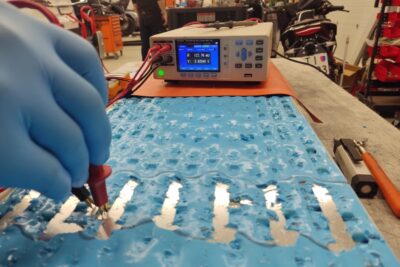

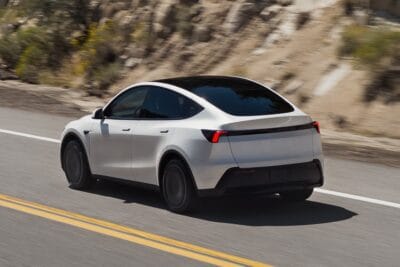
0 Comments